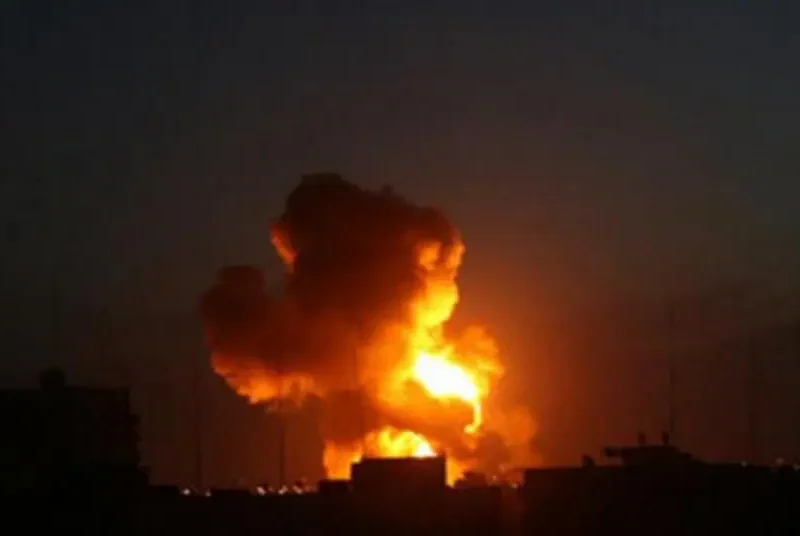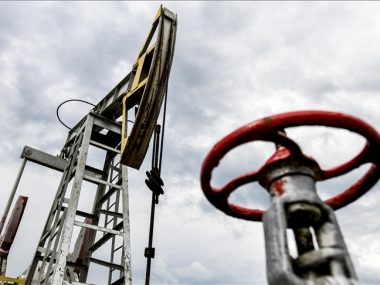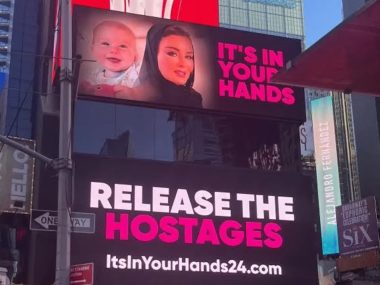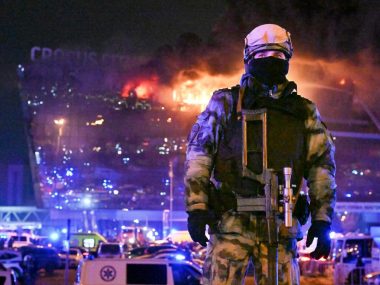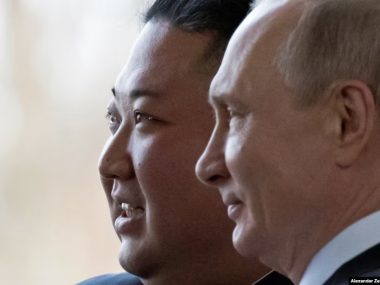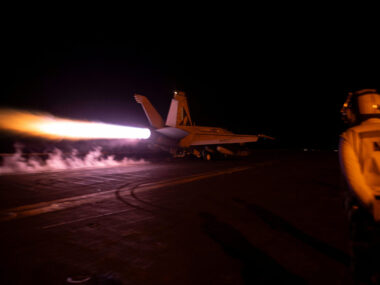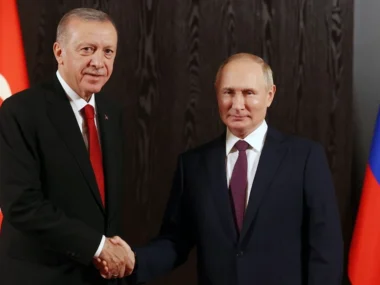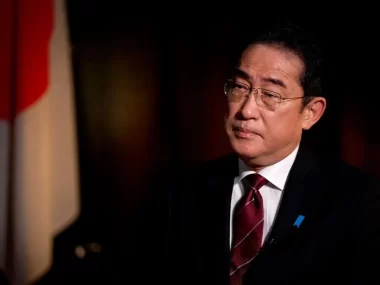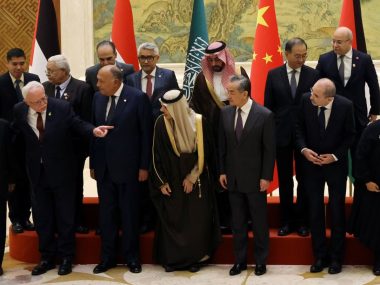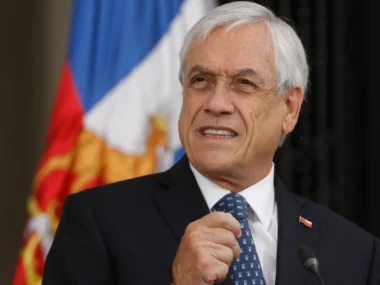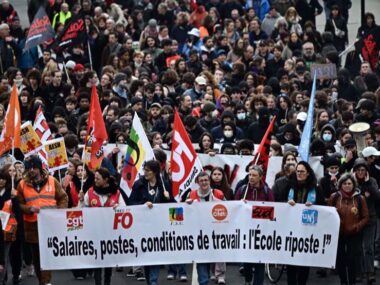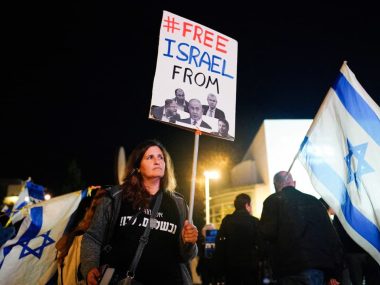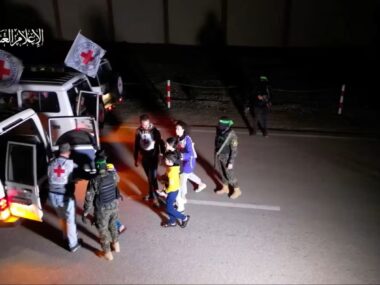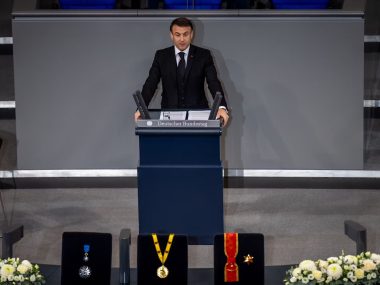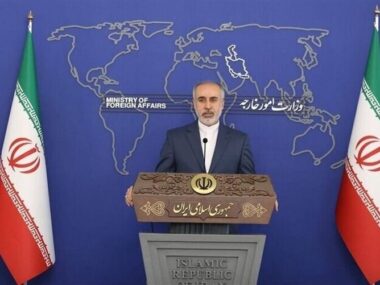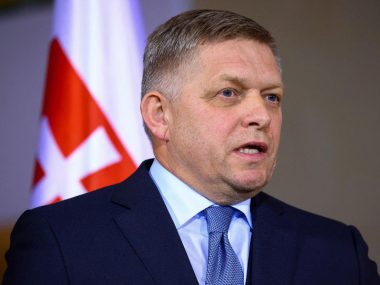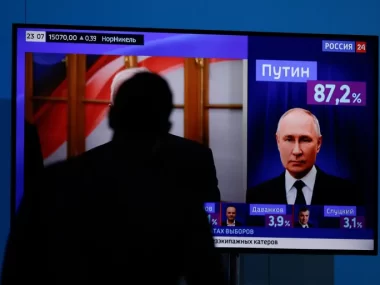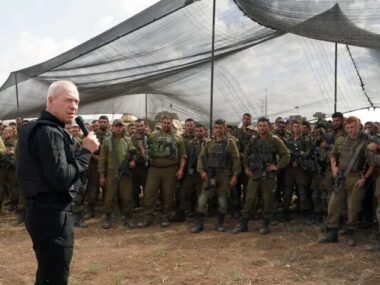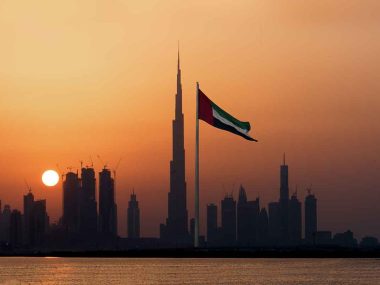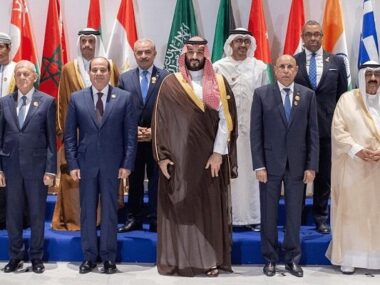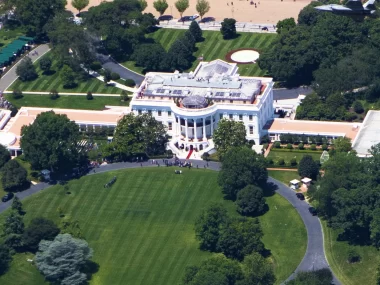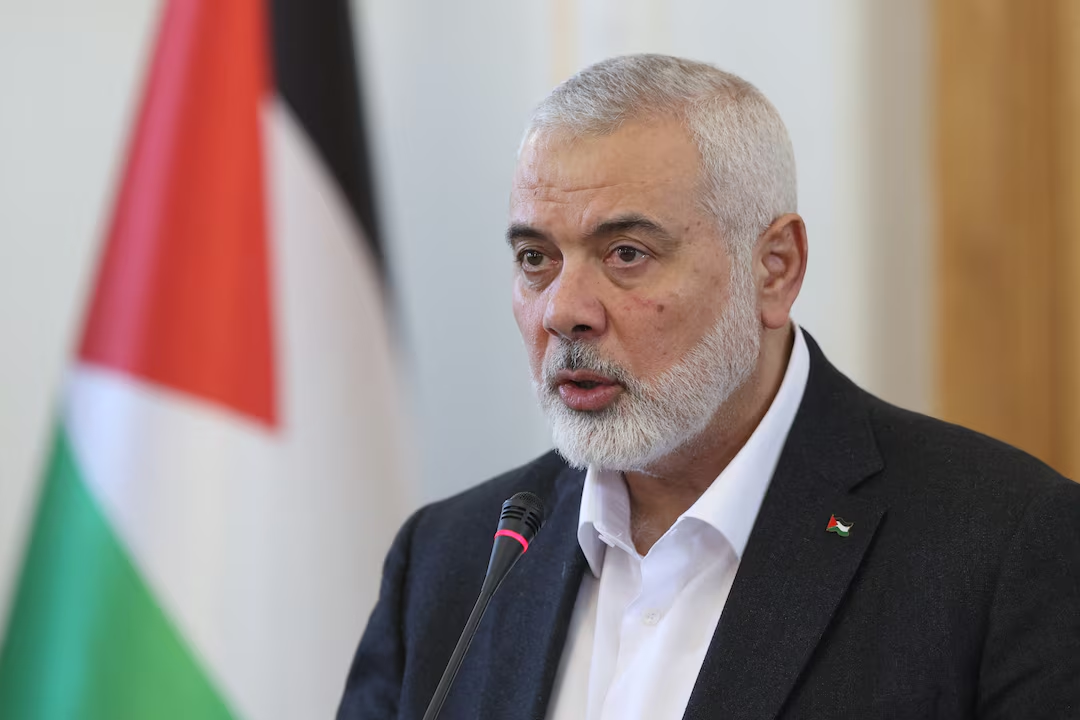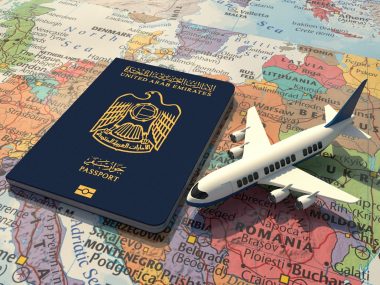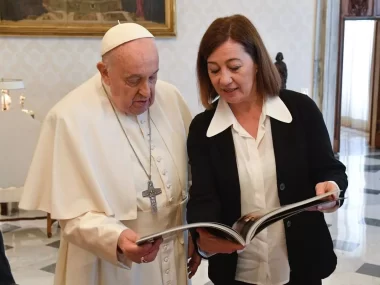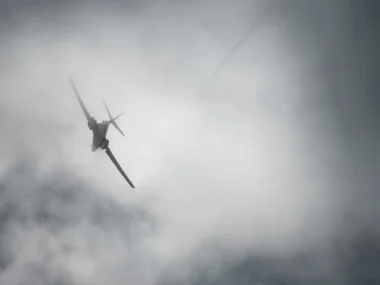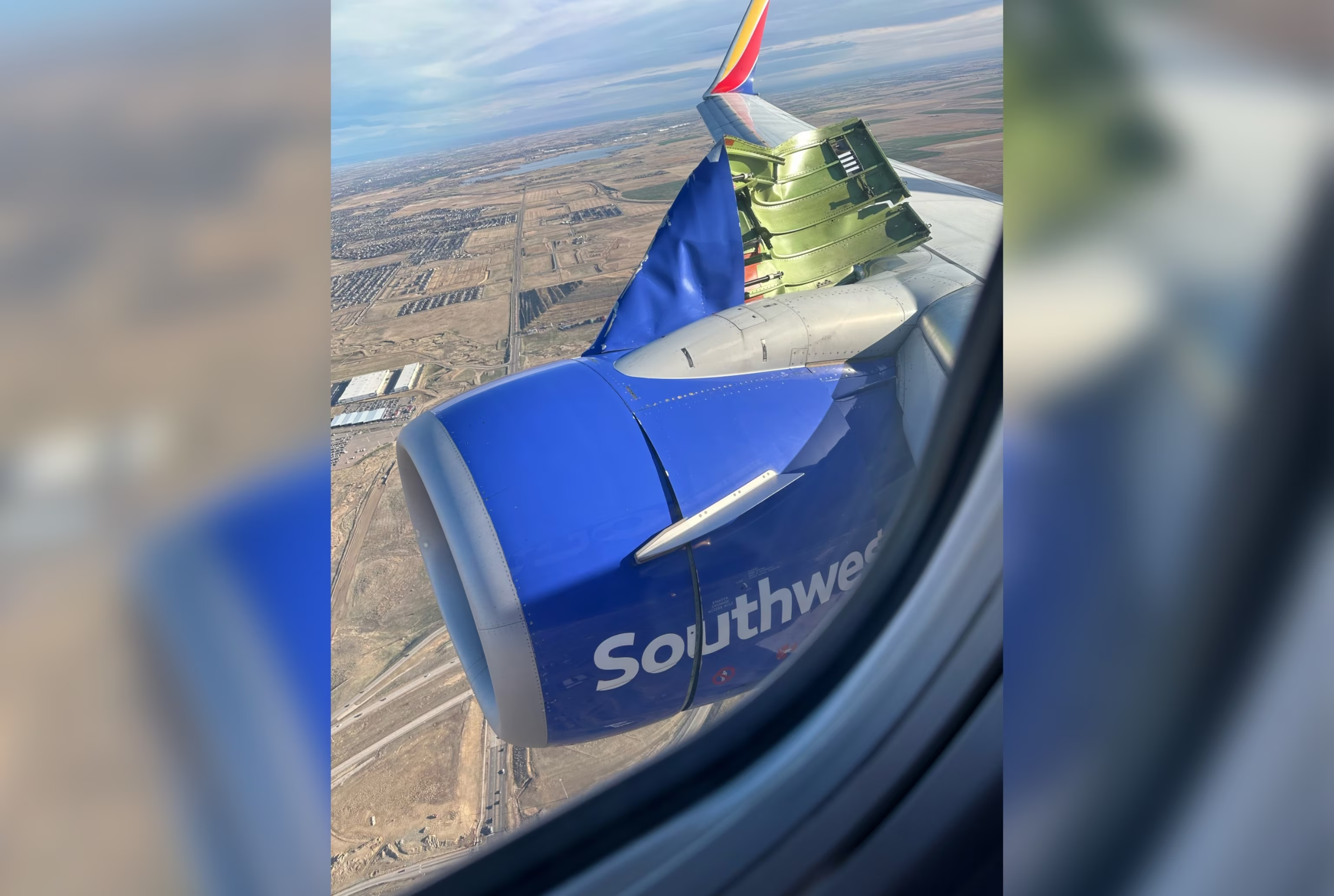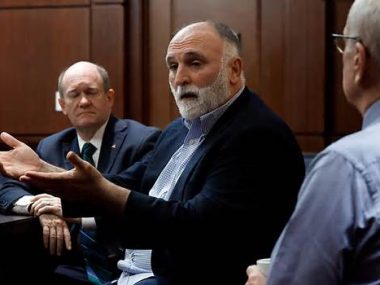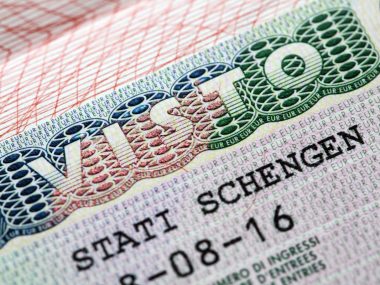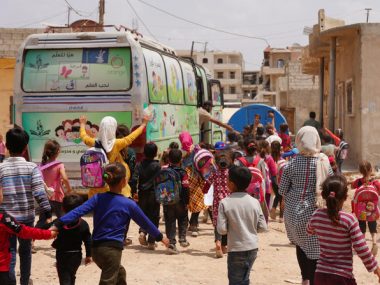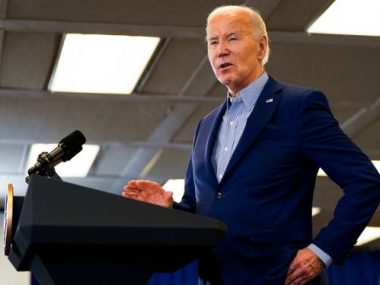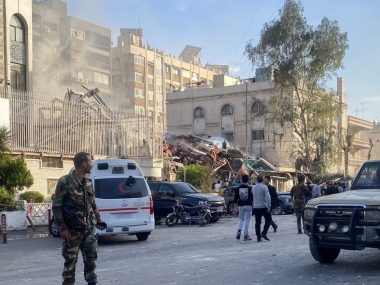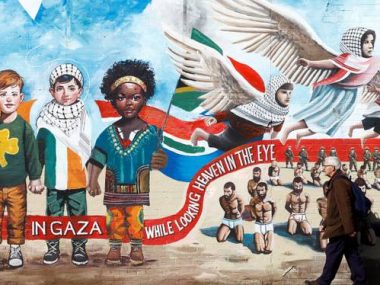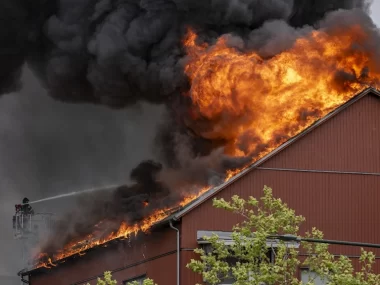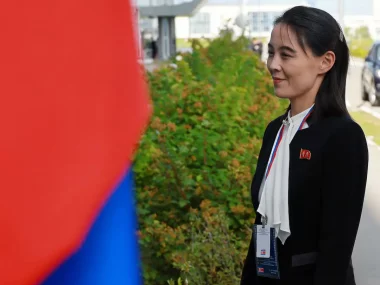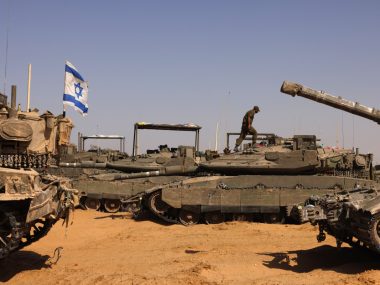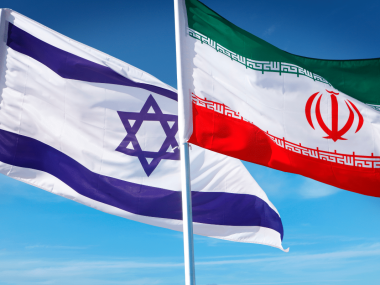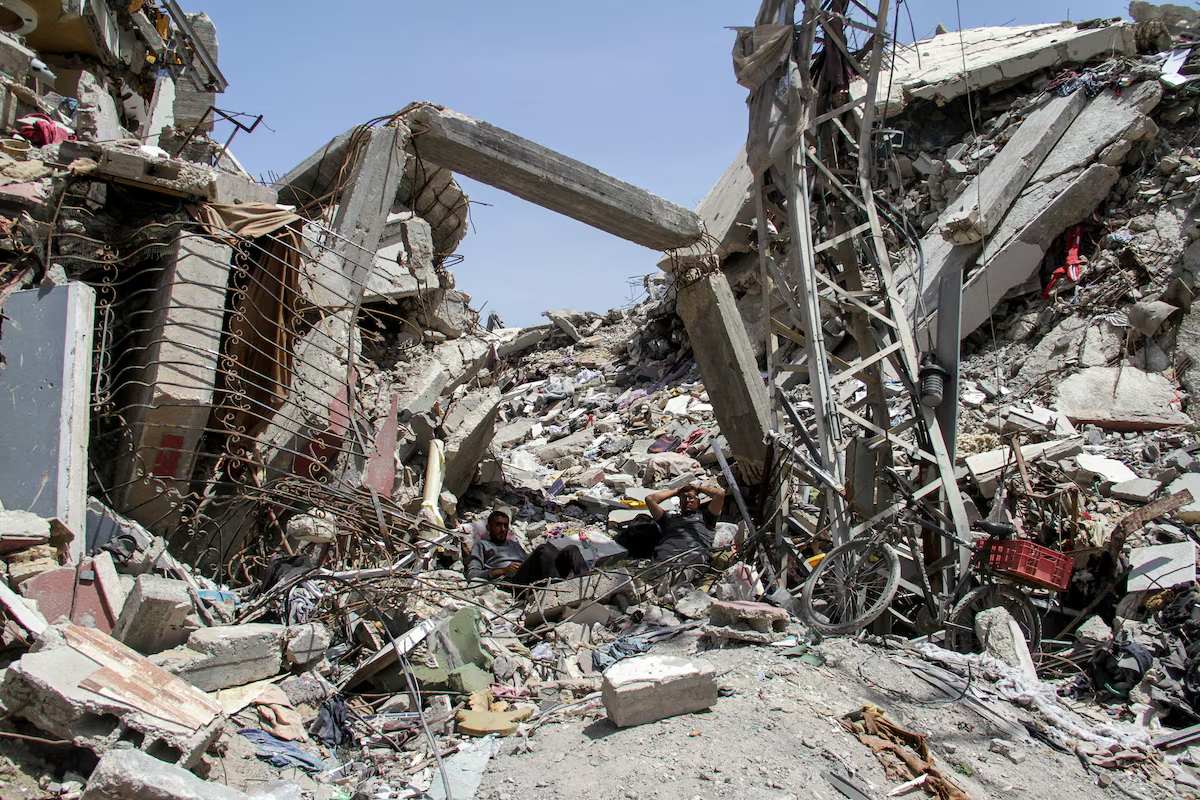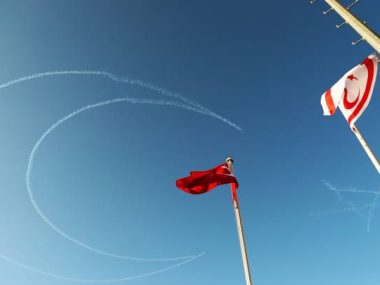|
Neubauer Coporation
Getting your Trinity Audio player ready...
|
During these rounds, they targeted 26 important sites for the Iranian militias. In the city of Al-Mayadeen, they bombed sites in the Al-Tammu neighborhood and the Ain Ali base near Al-Rahba Castle, the Al-Shibli neighborhood, Al-Haidariyah, and the grain silos.
In Albukamal, near the Syrian-Iraqi border, several sites in Al-Hajjana and Al-Hari were targeted.
In the city of Deir ez-Zor, Iranian militia sites were targeted near the former College of Education, the vicinity of the Iranian kitchen, and near the radars, Harabesh Medical Center, Hawija Sakr, and Ayyash warehouses.
The strikes resulted in the killing of 18 militia members, an infinite toll of those strikes.
Sources of the Syrian Observatory for Human Rights revealed great confusion among the ranks of the pro-Iranian militias, due to the lack of intelligence information they have about the places expected to be targeted, and the extent of the militias’ readiness to absorb the size of the American strike expected in the coming hours, while measures have been taken according to the available capabilities, while the militias lack any A plan to confront the American attack if it is widespread.
According to the sources of the Syrian Observatory, the leaders of the groups loyal to Iran have taken measures to reduce human losses in the event of the expected American targeting of their positions in Syria, as they sent their leaders to the governorates of Damascus and Homs, and also informed the leadership of the Iranian militias in Syria (leaders and members) affiliated with them, to adhere to their homes and remain in their homes. He communicated with the group leaders, while he limited himself to the site guards.
It also previously instructed all militias to stop military activities and target American bases in Syria, specifically in the Al-Bukamal sites, the farm area in Al-Mayadeen, and the Palmyra countryside area, which includes forces from the Iraqi Popular Mobilization Forces militia.
The United States of America waved a multi-level deterrent strike, according to what the US Secretary of Defense announced, in response to the Iranian groups’ attack on an American base in Jordan near the Syrian border.
Intelligence Report in Syria, Iraq, and Iran
Areas of regime influence during January: About 270 killed in violent acts, 12 fighting, assassinations, and targeting and government decisions that deepen the suffering of civilians and ignite their discontent.
During the first month of the year 2024, the regime’s areas of influence witnessed remarkable events of an escalation in violence, in addition to poor living conditions, in addition to the regime’s security grip and the continued series of arrests of civilians outside the scope of the law for unknown reasons and motives.
In the following report, the Syrian Observatory for Human Rights highlights the most prominent details and developments within regime-controlled areas during January 2024.
Total human losses in acts of violence
During the month of January, regime-controlled areas witnessed a continuous escalation of acts of violence and the human losses resulting from them, as the Syrian Observatory for Human Rights documented the killing of 267 civilians and non-civilians within the various Syrian regions under the influence of the Syrian regime and its loyal militias, distributed among As follows:
79 civilians, including 17 children and 14 women, are:
29, including 4 children and 5 female citizens, for murders
– 14, including two girls and 6 women, due to Jordanian attacks
– 8, including a child at the hands of the “Islamic State” organization
– 5 children, including war remnants
– 4, including a child and a woman Incidents of security chaos in Daraa
– 7 under torture in regime prisons
– 3, including a child and a woman, at the hands of factions and jihadists
– 2, due to Israeli targeting
– a child and a woman, due to explosions
– 4, including two children, shot by random bullets
– 1, at the hands of SDF
111 from the regime forces and militants loyal to them, they are:
– 51 at the hands of the “Islamic State” organization
– 22 at the hands of factions and jihadists
– 18 in incidents of security chaos in Daraa
– 10 in assassinations
– 9 in internal fighting
– 1 at the hands of SDF
39 of the militias affiliated with Iran:
– 23 due to Israeli targeting
– 5 due to American targeting
– 11 at the hands of the “Islamic State” organization.
19 of the militants are:
– 11 in clashes with Jordanian forces
– 3 in clashes with regime forces
– 3 in incidents of security chaos in Daraa
– 2 in fighting and random shooting
19 members of the “Islamic State” organization:
– 9 in clashes with regime forces in the desert
– 10, including a leader in security operations in Daraa
40 cases of kidnapping and extrajudicial detention during January.
The series of arbitrary arrests outside the scope of the law continues within areas under the control of the Syrian regime, as the Syrian Observatory for Human Rights documented the arrest of at least 33 civilians by the security services, including a woman, in addition to recording 7 cases of kidnapping, during the month. January.
The arrest cases were distributed as follows:
– 10, including a woman in Deir ez-Zor
– 9 in the Damascus countryside
– 7 in Daraa
– 4 in Aleppo
– 2 in Homs
– A man in Latakia
The kidnapping cases were distributed as follows:
– 5 in Daraa
– 2 in Homs
Crimes continue:
Crimes continue within areas controlled by regime forces in various governorates, in light of the failure of the regime’s security services to put an end to the chaos and widespread security chaos throughout their regions. The Syrian Observatory for Human Rights documented during the month of January the occurrence of 28 premeditated murders since At the beginning of the year 2024, some of them resulted from domestic violence or theft and others whose causes and motives are still unknown. These crimes claimed 29 lives: 3 children, 5 female citizens, and 21 men.
They were distributed as follows:
– 8 crimes in Daraa that claimed 8 lives. People, including a child and two women
– 4 crimes in Suwayda in which two men, a child and a woman were killed – 4 crimes in the Damascus countryside in which 4 people were killed, including a child and a woman
– 3 crimes in Homs in which 3 men were killed
– 3 crimes in Hama in which 3 men were killed
– 2 crimes in Al-Hasakah Two men were killed
– 2 crimes in Deir ez-Zor in which two men were killed
– A crime in Damascus in which a woman was killed
– A crime in Latakia in which two men were killed
Security chaos continues at a steady pace in “the cradle of the revolution.”
The total number of attacks in Daraa during the month of January, according to the documentation of the Syrian Observatory, reached 24 incidents of security chaos, all of which took place in different ways and methods, and caused the death of 35 people.
They are:
– 4 civilians, including a woman and a child
– 13 From the regime forces and security services affiliated with them and their collaborators
– 4 accused of drug trafficking
– 1 from the pro-Russian 8th Brigade
– 10 from the “Islamic State” organization, including a leader
– 3 from the local armed factions
12 Assassinations
The targeting, and fighting operations. Activists of the Syrian Observatory for Human Rights monitored 4 fighting, and 8 targeting and assassination operations of soldiers from the regime forces and its security services in the governorates of Deir ez-Zor, the Damascus countryside, Homs, Daraa, and Al-Hasakah during the month of January, leaving dead and wounded, and the details are as follows.
– January 1, unidentified gunmen targeted, with direct bullets, a member of the “Qalamoun Shield” militia affiliated with the regime forces, and one of the drug dealers in the region, killing him instantly and wounding his brother, in the town of Hafir al-Fawqa in the western Qalamoun region in the Damascus countryside.
-January 2, a citizen holding the position of a member of the Yabroud Council loyal to the regime forces was subjected to an assassination attempt with direct bullets at the hands of unknown gunmen, in the center of the city of Yabroud in the Qalamoun area in the Damascus countryside, which led to his immediate death.
-January 5, a volunteer first assistant in the Intelligence Division was killed. The soldier, who hails from the village of Al-Matonah in the northern countryside of As-Suwayda Governorate, was shot dead in the Yarmouk camp in the Damascus countryside, after being lured by unknown assailants to an abandoned school in the camp.
– January 7, a member of the Military Intelligence Division and an official in charge of the Al-Dabbana town detachment were killed, and 2 others were injured, as a result of the interception of a patrol by a group of “Al-Shibli” members of the Al-Buassi clan, and the outbreak of armed clashes between the two parties, in the village of Al-Suwaydiyah, south of Qamishli, north of Al-Hasakah Governorate, The injured were transferred to the hospital to receive treatment.
– January 8, residents found the body of an officer with the rank of captain from the ranks of the 112th Brigade. He was executed on the ground with gunshots, and his body was dumped in the vicinity of the city of Nawa in the western countryside of Daraa Governorate.
According to the sources, the officer was kidnapped hours before his execution, and it is not known whether he was killed by Israeli agents or by groups loyal to Iran or others.
– January 12, violent clashes with light and medium weapons broke out between the Al-Qaterji militia on the one hand, and the “National Defense” militia on the other hand, in the city of Al-Ashara in the eastern countryside of Deir ez-Zor, within the areas controlled by the regime forces and Iranian militias, due to a dispute over the revenues of the smuggling crossing that had been opened. Two days ago in the town of Darnaj, and as a result of those clashes, members of the Najras family on one side and members of the Al-Jaber family joined the clashes, each with one side, which led to the killing of 2 members of the Al-Jaber family and another whose identity was unknown.
– January 15, two members of the regime forces were assassinated by bullets from unknown gunmen. They were riding a motorcycle at the entrance of the Engineering Battalion on the Homs-Hama highway, north of the city of Rastan in the northern countryside of Homs. A military checkpoint belonging to Military Intelligence was also located near the battalion.
-January 17, one member was killed and two members of the Baath Brigades were seriously injured after they were targeted with direct bullets by unknown assailants, on the Yabroud-Ras al-Ayn road. They were transferred to a hospital to receive treatment.
-January 18, an officer in the regime’s military police linked to the Lebanese Hezbollah was injured in an assassination attempt by unknown assailants, by planting an explosive device in a car in the Shura residences in the town of Sasa’ in the western Damascus countryside near the border with the occupied Syrian Golan, within the areas of influence of the forces. The regime, while a child was martyred and 3 other children sustained varying injuries, affected by shrapnel from the bomb explosion. The wounded were transferred to the hospital to receive treatment.
– January 24, violent clashes took place with light and medium weapons between a group of drug dealers and dealers on the one hand, and patrol members of the State Security Branch on the other hand, in the Al-Qaws area, Dakhlet Al-Nawafeer, in the city of Jaramana in the Damascus countryside. As a result of being surrounded, one of them opened a hand grenade on the patrol, causing Two members of the State Security branch were killed, in addition to the killing of a major drug trafficker and trafficker.
– January 26, two people, a leader in the National Defense Forces and another armed person from the “Al-Jaber” family, were killed in the city of Al-Ashara in the eastern countryside of Deir ez-Zor, within the areas of influence of the regime forces and the militias loyal to them, in a case of taking revenge, and according to activists of the Syrian Observatory, the leader is the oldest For the killing of one of the family members two months ago, the latter took revenge by killing the leader.
-January 31, the leader of an armed group affiliated with the Baath Brigades, affiliated with the regime forces and close to the Lebanese Hezbollah, was killed in an assassination operation carried out by unknown gunmen. He was shot dead in front of his house on Al-Nahr Street in the city of Al-Nabk in the Damascus countryside.
“Government” decisions increase the suffering and discontent of civilians:
The President of the regime, Bashar al-Assad, issued two legislative decrees, the first stipulating a tightening of the penalty against those who work in the money-exchange profession “without a license” or those who transport or transfer foreign currencies outside Syria.
The new legislative decree stipulates the penalty with imprisonment for a period ranging from 5 to 15 years, a fine of three times the confiscated amounts, provided that the fine is not less than 25 million Syrian pounds, and confiscation of the entire seized amount.
The other legislative decree also prohibits dealing in currencies other than the Syrian pound in trades and transactions, while keeping the prison sentence without increasing the duration of those who deal in currencies other than the Syrian pound, while allowing them to settle to waive the prison sentence, while obliging them to pay a fine equal to the value of the amount traded.
It is noteworthy that the Syrian pound is still continuing its collapse against the US dollar, as it reached 14,900 liras in the capital, Damascus, against one US dollar, while in the city of Aleppo it reached 15,000 liras, and in the city of Hasakah, it reached 15,250 liras, while the head of the regime and his government are unable to take any action. To revive the economy in the areas under its control and save the Syrian pound from collapsing further.
The Ministry of Internal Trade and Consumer Protection of the regime’s government raised again, within about two weeks, the price of gasoline, raising the price of “90 octane” gasoline to 10,000 Syrian pounds, and the price of “95 octane” gasoline, to 12,700, and this comes in light of the continued collapse of reality. The economic situation is within the regime’s areas of control, and the deterioration of living conditions and high prices have exhausted citizens as a result of the collapse of the value of the Syrian pound and its reaching its lowest levels, and the low level of wages and salaries, which increases the burden on the shoulders of citizens, especially in light of the winter season and the extreme cold and the many needs it requires.
The new gasoline prices received a wave of angry responses and great public dissatisfaction on social media, especially since the new rise came days after they were raised, amid fears from citizens that there will be more decisions in the coming days.
The Ministry of Internal Trade and Consumer Protection of the regime’s government had raised the price of gasoline on January 8, as the price of a liter of “octane 90” gasoline reached 9,500 and “octane 95” reached 12,430, while the price of “free” diesel reached 9,500. 10,850, because these prices exceed the purchasing power of citizens, which led to widespread dissatisfaction among citizens within areas controlled by regime forces.
The increase in the price of gasoline came at a time when the areas controlled by the regime forces are witnessing further economic deterioration and also coincides with the beginning of the winter season and the great financial burdens it requires, and the Syrian pound continuing to lose its value against the US dollar.
The suffering of citizens continues within the Syrian governorates under the control of the regime forces, where citizens live in difficult financial and economic conditions as a result of the high prices of basic materials, the lack of job opportunities, and the low level of workers’ wages and employees’ salaries, coinciding with the continuous collapse of the value of the Syrian pound against the US dollar, amid the regime’s government’s leniency in taking… Measures to improve the living conditions of citizens and reduce the burdens on them, in light of the harsh winter and the daily needs of the family, which puts the citizen in front of great challenges in securing livelihoods.
As a result of the major collapse in the value of the Syrian pound, the markets witnessed a significant rise in the prices of most commodities and basic foodstuffs. On a tour by activists of the Syrian Observatory for Human Rights, the prices of some types of vegetables were as follows: a kilo of plastic tomatoes is 7,200 liras, a kilo of lemons is 2,000 liras, and a kilo of potatoes is 7,200 liras. 4800 liras, a kilo of cucumbers 3800 liras, a kilo of carrots 3200 liras, a kilo of onions 7000 liras, a kilo of cabbage 2300 liras, a kilo of cauliflower 2300 liras.
As for the price of chicken, it reached 46,000 liras in the capital, Damascus, while the price of a kilo of cutlets reached 68,000 liras, and the price of grilled chicken reached 96,000 liras.
With the extreme cold of winter and the deterioration of living conditions to a great extent, the regime’s government continues to raise the prices of fuel, including gasoline, diesel, and domestic gas, to an extent that far exceeds the purchasing power of citizens, as the price of a liter of “Okan 95” gasoline reached 12,160 liras, and a liter of “Octane 90” gasoline reached 11,675 liras. As for the price of a liter of free diesel, it reached 10,900 liras, which greatly exacerbated the suffering of citizens and created a massive transportation crisis and increased costs for citizens.
The high prices for all important essentials created a state of great dissatisfaction among civilians and angry responses on social media sites, where many commented on those prices that they were far beyond their ability, accusing the regime’s government of seeking to starve citizens by enacting laws and issuing decisions, and not monitoring the markets and a state of monopoly. Which is conducted by merchants linked to the regime, and many of them called for radical solutions to end their suffering, the most important of which is raising the salary and wage limit to suit the requirements of life.
It is noteworthy that the exchange rate of the Syrian pound against the US dollar reached 14,650 purchases and 14,850 sales in the Syrian capital, Damascus, while its exchange rate in the city of Aleppo reached 14,700 purchases and 14,900 sales, and in the city of Hasakah it reached 15,050 purchases and 15,150 sales.
The uprising of the people of Jabal al-Arab continues:
Voices demanding the departure of the head of the regime, the strengthening of the decentralization system, the achievement of a political transition, and the implementation of International Resolution 2254 are still being heard in Suwayda, where the people of Jabal al-Arab go out in daily demonstrations demanding the overthrow of the regime and the implementation of Resolution 2254. The numbers of demonstrators range from hundreds to thousands, and are getting louder. Their voices were expressed in resonant phrases, the most prominent of which were: “Revolution is the only inevitable solution to uproot any tyrannical dictatorial regime.” “We are the seeds of the earth. Some of us may be imprisoned or die, but we will flourish.” “The night must clear, the shackles must be broken, and our revolution must be victorious.” “Yes to Syria’s unity, no.” To divide,” “Together to put Assad on trial, together to implement Resolution 2254.”
The marches continue to target regime areas:
The month of January witnessed the continuation of the phenomenon of air attacks by drones belonging to factions and jihadists on areas of regime influence. On January 10, the air defenses of the regime forces shot down 7 drones belonging to Hay’at Tahrir al-Sham, in the areas of rural Idlib and Aleppo. , as it was trying to carry out attacks against regime forces positions in the region.
Continuing Israeli encroachment:
Israel continues to encroach on Syrian territory, as the month of January witnessed 7 times during which Israel targeted Syrian territory, 4 of which were air strikes and 3 were ground strikes. These strikes resulted in the injury and destruction of about 15 targets, including weapons and ammunition depots, headquarters, centers, and vehicles.
These strikes caused the death of 21 military personnel, in addition to wounding 7 others, including with varying injuries.
The dead were:
– 5 of Iranian nationality from the Revolutionary Guards
– 4 from Lebanese Hezbollah
– 2 from Iraqi nationality
– 7 from militias affiliated with Iran, of Syrian nationality
– 3 from militias. A member of Iran of non-Syrian nationality
In addition to the martyrdom of a civilian due to Israeli targeting
While the targets were distributed as follows: 4 for Damascus and its countryside, and 3 for Daraa. The Syrian Observatory indicates that Israel may target more than one governorate at a time, which explains the discrepancy in the number of times with the number of targets.
On January 6, Israeli forces also shot a person from the town of Jubata al-Khashab in the Quneitra countryside, while he was herding sheep in the area separating Quneitra and the occupied Syrian Golan, leading to his death.
While the death toll from Israel’s assassination of the commander of the “Quds Force,” Reda al-Moussawi, who was killed by Israeli strikes on December 25 of last year, 2023, on the Sayyida Zeinab area south of Damascus, where two members of the Iranian “Revolutionary Guard” militia were confirmed killed, rose to 6. Of Iranian nationality, succumbed to the wounds they sustained as a result of those strikes. Israel focuses mainly on targeting individuals working with the Iranian Revolutionary Guard and Lebanese Hezbollah.
The Syrian Observatory for Human Rights warns of the repercussions of the escalation of living crises and chaos accompanied by security chaos within the regime’s areas of influence, in light of Bashar al-Assad’s regime’s intransigence towards authority, which is the main cause of what the situation has turned into, not only within its areas of influence but throughout Syrian territory. Accordingly, the Syrian Observatory renews His call on the international community to find radical solutions that protect the Syrian civilian from the series of disasters that afflict his daily life, ensure a peaceful transfer of power, and hold accountable the symbols of the regime and all the killers of the Syrian people.
Intelligence Report Acquired by Jorge Jimenez Neubauer Torres
Owner of George V Magazine Intelligence Unit

